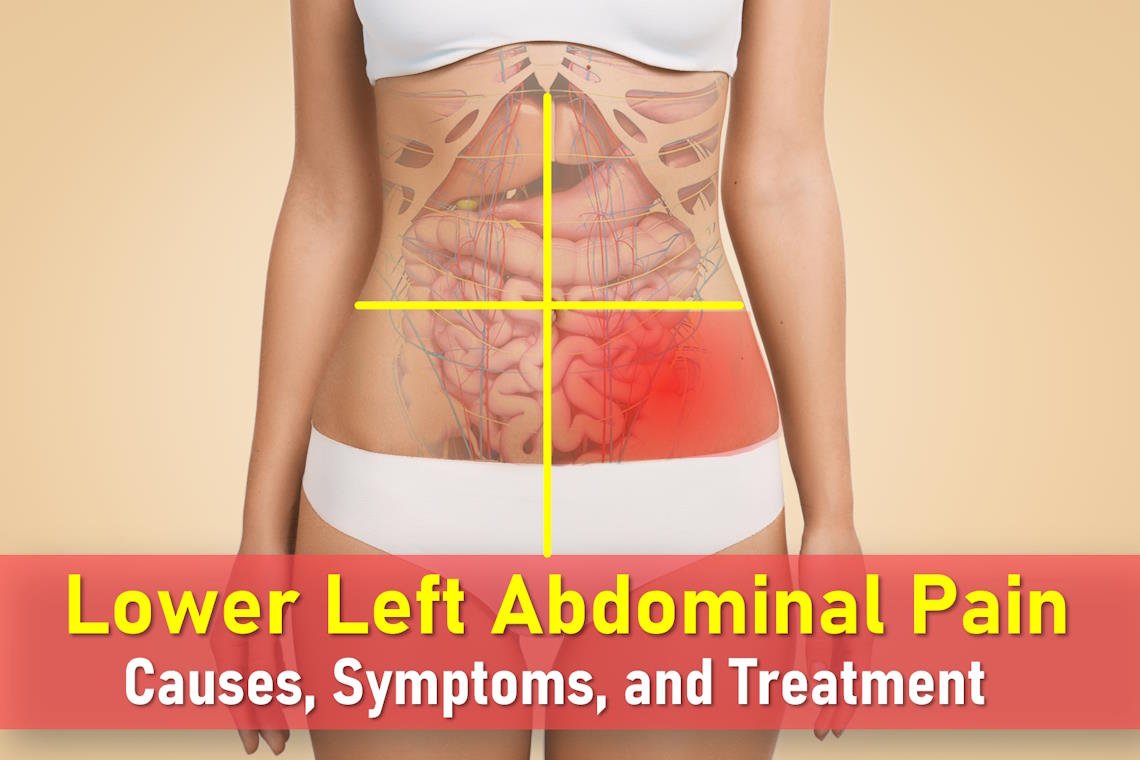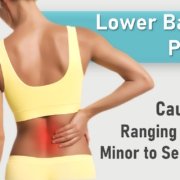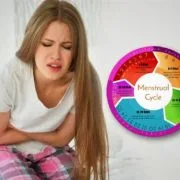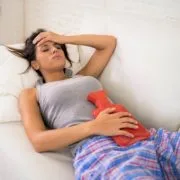Lower Left Abdominal Pain: Causes, Symptoms, and When to See a Doctor
Lower left abdominal pain refers to discomfort occurring primarily in the lower half of the abdomen on the left side. Sometimes called left iliac fossa pain (though this technically describes a smaller area in the lower left corner), this pain can range from mild gas discomfort to severe symptoms indicating serious conditions like inflammatory bowel disease (IBD) or hernias. The appropriate treatment depends entirely on what’s causing the pain.

Locating the Lower Left Abdomen
To visualize your lower left abdomen, imagine dividing your torso from the bottom of your ribs down to your pubic area into four equal sections. The lower left quadrant (LLQ) is the section below your belly button on the left side. This area contains several important structures:
- The end portion of the small intestine (ileum)
- Parts of the large intestine (colon)
- The rectum
- The left ureter (located behind other organs)
- For women, the left ovary and Fallopian tube
- Skin, nerves, and blood vessels serving the area
Common Causes of Lower Left Abdominal Pain
Lower left abdominal pain can have many different causes, ranging from mild and temporary issues to conditions that require urgent medical care. Although people often describe this as “stomach pain,” the discomfort may actually come from other organs in the area, including the intestines, urinary tract, reproductive organs, or even muscles. Understanding the possible causes can help you decide when self-care is enough and when it is important to seek medical attention.
Constipation
Constipation happens when bowel movements become less frequent or more difficult than usual, leading to a buildup of stool in the intestines. This can cause discomfort or cramping anywhere in the abdomen, including the lower left side. Possible signs include:
- Fewer than three bowel movements per week
- Hard, dry, or pellet-like stools
- A feeling of incomplete emptying after using the bathroom
- General abdominal bloating or discomfort
In most cases, constipation can be improved with dietary changes, increased fluid intake, and regular physical activity. However, severe or persistent constipation should be evaluated by a doctor.
Gastroenteritis and Food Poisoning
Both gastroenteritis (often caused by a virus) and food poisoning (usually caused by contaminated food or water) can trigger lower abdominal discomfort, along with other symptoms such as:
- Watery diarrhea
- Nausea and vomiting
- Generalized stomach cramps, which may improve after a bowel movement
These illnesses are typically short-lived, but it is important to stay hydrated. Seek medical care if symptoms are severe, if you cannot keep fluids down, or if there is blood in your stool.
Irritable Bowel Syndrome (IBS)
IBS is a long-term condition that affects how the large intestine functions. While it does not cause permanent damage, it can significantly impact daily life. Common symptoms include:
- Cramping abdominal pain, often relieved by passing stool or gas
- Bloating and excess gas
- Alternating diarrhea and constipation
- Symptoms that tend to come and go over time
There is no single test for IBS. Doctors typically make the diagnosis after ruling out other possible causes through a combination of medical history, physical examination, and sometimes lab tests or imaging.
Diverticulitis
Diverticulitis occurs when small pouches (diverticula) in the wall of the colon become inflamed or infected. This often leads to:
- Persistent pain in the lower left abdomen
- Fever and chills
- Changes in bowel habits, such as constipation or diarrhea
Mild cases may be treated with rest, dietary adjustments, and antibiotics, but severe cases can require hospitalization or surgery.
Colon and Rectal Cancers
Cancers of the colon or rectum can develop anywhere in the large intestine, but they often affect the descending or sigmoid colon on the left side. Warning signs to watch for include:
- Persistent abdominal pain or bloating
- Changes in bowel habits, such as narrower stools or ongoing diarrhea/constipation
- Unexplained weight loss
- Fatigue and weakness
- A feeling that the bowel does not empty completely
- Blood in the stool or on toilet paper
These symptoms should never be ignored. Early detection through screening, such as a colonoscopy, can greatly improve treatment outcomes.
Hernias in the Groin Area
A hernia occurs when part of the intestine or abdominal tissue pushes through a weak spot in the abdominal wall. On the left side, this could be an inguinal or femoral hernia. Common features include:
- A visible or tender bulge in the groin area
- Pain or discomfort that worsens with coughing, bending, or lifting
- Pain that may radiate across the lower abdomen
- Occasional nausea and vomiting
- In serious cases, the protruding tissue may become trapped (incarcerated) or lose its blood supply (strangulated), which is a medical emergency
Kidney Infections
While kidney infections usually cause pain in the back or sides, they can sometimes lead to discomfort in the lower abdomen. This happens when the infection affects areas close to the lower urinary tract. Symptoms may include:
- Pain that starts in the back or side and wraps around to the front
- Painful urination or an urgent need to urinate more often
- Fever, chills, and a general feeling of being unwell
- Occasionally, mild lower abdominal discomfort without significant back pain
Kidney infections require prompt medical treatment to prevent complications.
Causes of Lower Left Abdominal Pain in Women
Lower left abdominal pain in women can be linked to the reproductive system, digestive tract, urinary system, or even musculoskeletal issues. Some causes are temporary and harmless, while others require urgent medical attention. Understanding the possible reasons can help in recognizing when to rest, when to see a doctor, and when to seek emergency care.
Ovulation Pain (Mittelschmerz)
Some women experience temporary discomfort during ovulation, known as mittelschmerz (German for “middle pain”). This happens when an egg is released from the ovary and may cause:
- Pain occurring about halfway between menstrual periods
- Discomfort that can be sharp or cramp-like and usually subsides within a few hours
- Pain on the left or right side, depending on which ovary releases the egg that month
Ovulation pain is usually harmless, but if the pain is severe or accompanied by other symptoms, it is wise to seek medical advice.
Pelvic Inflammatory Disease (PID)
Pelvic Inflammatory Disease, PID is an infection of the female reproductive organs, often caused by bacteria spreading from the vagina or cervix to the uterus, fallopian tubes, or ovaries. If not treated, it can lead to serious complications, including infertility. Common symptoms include:
- Lower abdominal or pelvic pain, which may be more noticeable on the left side
- Pain during sexual intercourse
- Abnormal vaginal bleeding between periods or after sex
- Unusual vaginal discharge, sometimes with an unpleasant odor
Early treatment with antibiotics is important to prevent long-term damage.
Ovarian Torsion
Ovarian torsion occurs when an ovary twists around the tissues that support it, cutting off its blood supply. This is often linked to the presence of large ovarian cysts and requires emergency medical care. Symptoms include:
- Sudden, severe pelvic or lower abdominal pain that may come and go
- Pain often focused on one side, such as the left
- Nausea and vomiting due to sudden pain
Delaying treatment can result in permanent loss of the ovary, so prompt diagnosis is essential.
Endometriosis
Endometriosis happens when tissue similar to the lining of the uterus grows outside the uterus, such as on the ovaries, fallopian tubes, or bowel. This tissue reacts to hormonal changes, which can cause inflammation and pain. Symptoms may include:
- Ongoing pelvic or lower abdominal pain, often worse during menstruation
- Pain focused on one side, including the left, depending on where the tissue is located
- Painful periods and discomfort during sexual intercourse
- In some cases, fertility problems
Treatment may involve medication, hormone therapy, or surgery depending on the severity.
Ectopic Pregnancy
An ectopic pregnancy occurs when a fertilized egg implants outside the uterus, usually in a fallopian tube. This is a medical emergency, as the growing pregnancy can cause the tube to rupture. Symptoms can include:
- Sharp or crampy lower abdominal pain that may start suddenly or worsen over time
- Abnormal vaginal bleeding, which may be lighter or heavier than a normal period
- Dizziness, fainting, or shoulder tip pain (caused by internal bleeding irritating the diaphragm)
- Digestive upset, such as diarrhea or nausea
Important: If there is any chance of pregnancy and these symptoms occur, seek immediate medical care to rule out ectopic pregnancy.
Ovarian Cancer
Ovarian cancer can be difficult to detect early, as symptoms may be vague or develop gradually. However, being aware of potential warning signs can help with earlier diagnosis. These may include:
- Persistent pelvic or lower abdominal pain or pressure
- Abdominal bloating or swelling
- Changes in bowel habits, such as constipation
- Feeling full quickly when eating
While these symptoms can be caused by many less serious conditions, ongoing or worsening symptoms should always be checked by a healthcare provider.
Causes of Lower Left Abdominal Pain in Men
Lower left abdominal pain in men can sometimes be related to conditions affecting the reproductive organs, urinary tract, digestive system, or even blood vessels and muscles. While some causes are mild, others require urgent medical attention.
Testicular Torsion
Testicular torsion is a medical emergency that occurs when a testicle twists around the spermatic cord, cutting off its blood supply. Without prompt treatment, permanent damage can occur. Symptoms often include:
- Sudden, severe pain in the scrotum that may radiate into the lower left abdomen
- Most common in teenagers but can occur at any age
- Swelling, redness, and extreme tenderness of the affected testicle
- Nausea or vomiting due to intense pain
Immediate medical attention is critical, ideally within a few hours, to save the testicle.
Epididymo-orchitis
Epididymo-orchitis is inflammation of the epididymis and testicle, often caused by bacterial infections, including sexually transmitted infections (STIs) or urinary tract infections. It can cause:
- Gradual onset of pain and swelling on one side of the scrotum
- Redness and warmth in the affected area
- Painful urination or an urgent need to urinate
- Sometimes accompanied by penile discharge
Treatment usually involves antibiotics and supportive measures such as rest and scrotal elevation.
Other Potential Causes of Lower Left Abdominal Pain
Inflammatory Bowel Disease (IBD)
IBD is a group of chronic conditions, including Crohn’s disease and ulcerative colitis, that cause inflammation of the digestive tract. These conditions differ from irritable bowel syndrome (IBS), which does not involve inflammation or damage to the intestines. Common features include:
- Persistent abdominal cramping or pain
- Diarrhea that may contain blood or mucus
- Unexplained weight loss
- Fatigue and reduced appetite
IBD symptoms can flare up and then improve, but ongoing management with medical guidance is usually necessary.
Sigmoid Volvulus
Sigmoid volvulus occurs when the sigmoid colon (the S-shaped section of the large intestine) twists on itself, causing an obstruction. It is more common in older adults, particularly those with chronic constipation or certain neurological conditions. Symptoms may include:
- Severe, cramping abdominal pain
- Significant abdominal bloating and distension
- Constipation and inability to pass gas
This condition requires urgent medical and often surgical intervention.
Kidney Stones
Kidney stones form when minerals and salts crystallize inside the kidneys. When they move into the ureter, they can cause intense pain, often called renal colic. Symptoms can include:
- Sudden, severe pain starting in the back or flank and moving toward the lower abdomen or groin
- Pain that may radiate to the testicles in men
- Blood in the urine (pink, red, or brown discoloration)
- Painful or frequent urination
Smaller stones may pass on their own, while larger ones may require medical treatment.
Shingles (Herpes Zoster)
Shingles is caused by reactivation of the chickenpox virus, which can remain dormant in the body for years. Before the distinctive rash appears, symptoms may include:
- Burning, tingling, or sharp pain in a specific area, often on one side of the body
- General tiredness or feeling unwell
A few days later, a blistering rash usually develops in the affected area. Early antiviral treatment can reduce pain and complications.
Abdominal Aortic Aneurysm
An abdominal aortic aneurysm (AAA) occurs when a section of the aorta, the body’s main artery, becomes enlarged and weakened. While it often causes no symptoms, warning signs of a possible rupture include:
- Deep, persistent pain in the abdomen or back
- Pain that may extend into the lower left or right abdomen
- Sudden drop in blood pressure, dizziness, or collapse (in rupture cases)
A ruptured AAA is life-threatening and requires immediate emergency care.
Other Possible Causes
Not all lower left abdominal pain has a single, obvious source. Other possibilities include:
- Muscle strains or injuries in the abdominal wall, often made worse by movement
- Referred pain from back, hip, or pelvic joint problems
- Nerve-related pain such as that from nerve compression or inflammation
- Less common digestive disorders, including intestinal blockages or infections
Because so many different conditions can cause this symptom, persistent or severe pain should be evaluated by a healthcare provider.
When to Seek Medical Attention for Lower Left Abdominal Pain
While some causes of lower left abdominal pain resolve on their own, certain symptoms warrant prompt medical evaluation. Seek immediate care if you experience:
- Severe or worsening pain that doesn’t improve
- Persistent vomiting that prevents keeping food or liquids down
- Unexplained weight loss without diet or lifestyle changes
- Dizziness, lightheadedness, or fainting spells
- Blood in your stool or on toilet paper
- Significant changes in bowel habits (new constipation or diarrhea)
- Possible pregnancy with accompanying pain (take a pregnancy test first)
- Sudden, severe scrotal pain in men
- Increasing abdominal bloating or distension
Diagnostic Approaches for Lower Left Abdominal Pain
Initial Medical Evaluation
Healthcare providers typically begin with:
- A thorough discussion of your symptoms and medical history
- A physical examination of your abdomen and possibly:
- Rectal examination
- Pelvic examination for women
- Testicular examination for men
- Basic laboratory tests:
- Urinalysis to check for infections
- Blood tests to assess:
- Kidney and liver function
- Signs of infection or inflammation
- Blood cell counts
- Blood sugar levels
- STI testing when appropriate
Advanced Diagnostic Testing
Depending on initial findings, your doctor may recommend:
- Imaging studies:
- Ultrasound (particularly for pelvic or scrotal concerns)
- CT scan (for comprehensive abdominal evaluation)
- MRI (for detailed soft tissue imaging)
- Abdominal X-rays (in specific cases)
- Endoscopic procedures:
- Colonoscopy (to examine the large intestine)
- Sigmoidoscopy (for lower colon evaluation)
Note: Not all patients require extensive testing. Your doctor will tailor the diagnostic approach based on your specific symptoms and examination findings.
Treatment Options for Lower Left Abdominal Pain
Treatment varies significantly depending on the underlying cause:
- Self-limiting conditions (like viral gastroenteritis) often resolve with rest and hydration
- Infections typically require antibiotic therapy
- Inflammatory conditions may need anti-inflammatory medications or immune modulators
- Surgical emergencies (like testicular torsion or ectopic pregnancy) require immediate intervention
- Chronic conditions (such as IBD) benefit from long-term management plans
Prognosis and Long-Term Outlook
The expected outcome depends entirely on the specific diagnosis:
- Acute conditions often resolve completely with proper treatment
- Surgical conditions typically have good outcomes when addressed promptly
- Chronic conditions can often be managed effectively with proper medical care
Your healthcare provider can offer specific prognostic information once a definitive diagnosis is established. Remember that early evaluation of persistent or severe lower left abdominal pain often leads to better outcomes.
Final Thoughts
Lower left abdominal pain can stem from various causes, ranging from mild digestive issues to serious medical conditions. While occasional discomfort may resolve on its own, persistent or severe pain—especially when accompanied by warning signs like vomiting, blood in stool, or dizziness—warrants prompt medical attention. By understanding potential causes and recognizing when to seek help, you can take proactive steps toward diagnosis and treatment. Always consult a healthcare provider for personalized evaluation, as early intervention often leads to better outcomes.










